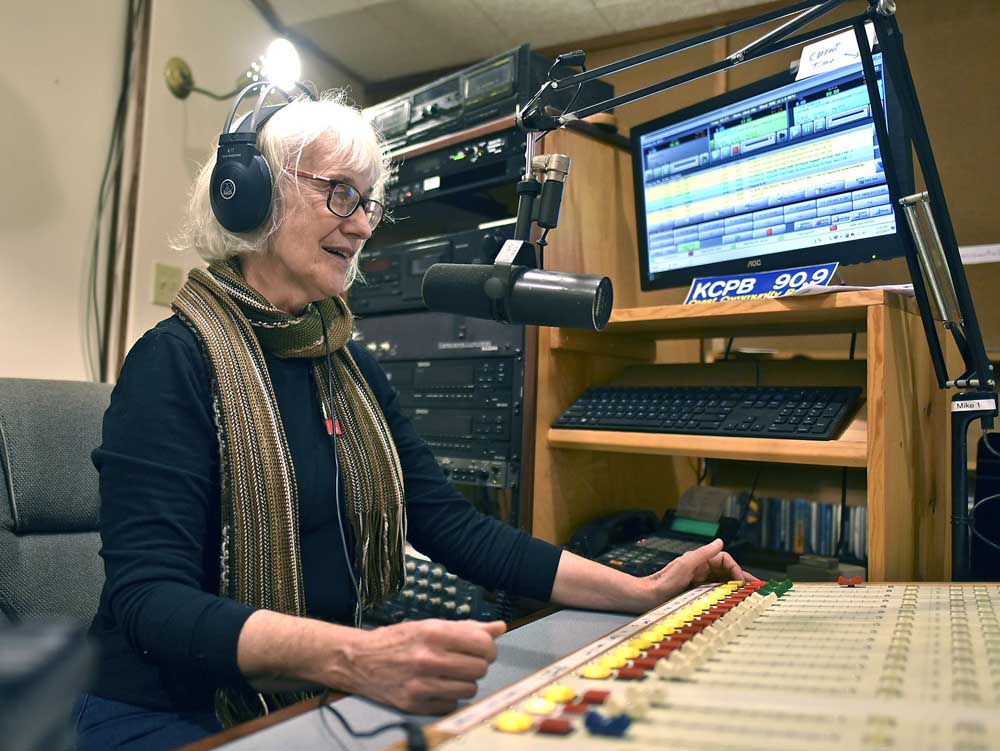Scam artist sentenced to 2 years in prison
Published 5:00 pm Thursday, July 14, 2011
PORTLAND Donald Dean Seybold, the former owner of Ernst& Ernst Galleries in Cannon Beach and Seaside, will serve two years in the Federal Correctional Institution in Sheridan for committing one felony count of wire fraud.
Seybold, 38, who was sentenced in U.S. Federal Court Thursday, also will serve three years probation after he is released from the federal prison. In addition, he will pay an as-yet-undetermined amount of restitution to gallery investors he defrauded in a Ponzi scheme for five years.
Trending
At least 16 art investors lost an estimated $915,955 from 2004 to 2009.
Another 15 victims who consigned artwork to Seybold to sell also claimed losses, but their claims werent included in the judgment.
In handing down the sentence, U.S. District Court Judge Anna J. Brown said that, although the losses didnt involve physical violence or homicide, there were victims who suffered a crime.
They are victims, but victims in a different way, said Brown after listening to several of Seybolds investors testify about the losses they suffered. There is this other sense of the impact they experienced of a very hurtful breach of trust.
In the end, Seybold had cooperated fully with authorities to gather evidence against himself, Brown said. But, she added, Humpty Dumpty cant be put together again.
This isnt a nickel-and-dime loss, Brown said. This was a scheme that took several years; it was a deception put together by the defendant.
Trending
Beginning in 2004, Seybold told his customers that they could purchase and resell art to buyers who had expressed interest in the work. However, both the art and the buyers didnt exist.
Seybold charged investors credit cards or obtained money from them to invest in the fraudulent deals. He also used money he received from later investors to pay off earlier investors, saying that the money was profit from their earlier investments; this is the definition of a Ponzi scheme.
At the time of his arrest on May 14, 2009, the FBI estimated that Seybold had defrauded more than 100 investors of more than $3.2 million. After the arrest, at least another 100 claims were made.
In addition, Seybold wrote $472,000 in bad checks from October 2008 to April 2009.
The FBI confiscated 2,000 pieces of artwork from Seybolds galleries in Cannon Beach and Seaside. Much of it was claimed by several different customers and by the artists who had consigned some of the work to Seybold to sell.
It took more than two years for the U.S. Department of Justice to sort out the claims, and according to courtroom discussion Thursday, some of the claims still have not been clarified because of missing or nonexistent receipts or artwork.
Brown ruled that those who consigned artwork to Seybold would have to take their claims to civil court because there wasnt enough evidence in this chaotic situation to prove that they were victims of Seybolds overall Ponzi scheme or just bad business practices.
By the time Seybold walked away from the galleries, they were in financial ruin. There is no question that losses were sustained, Brown said. It is the governments burden to prove that the losses sustained are part of the Ponzi scheme or ghost art. The state of the record is insufficient.
Seybold apparently used the money to keep the galleries afloat. Investigators could find no lavish expenditures made by Seybold. They did find, however, that he commingled funds from two bank accounts for business and personal expenses.
Art investors became suspicious about Seybolds actions in early 2009 and increasingly began calling the galleries to find him, said U.S. District Attorney Hannah Horsley. As pressure mounted, Seybold confessed his crime in an email to investors, consignors and artists March 11, 2009.
Before he turned himself in to police, however, he hammered a nail in his computer and threw it into the Neawanna River. Police confiscated two other computers in the galleries.
After Seybold confessed his crime and before the FBI began its investigation in May, artists and investors descended on the galleries and began removing artwork, Horsley said. Although some of it has been accounted for, information about missing pieces is still coming in, she said.
In her closing statement, Horsley said that when Seybold knew that his galleries were failing, he could have sold his inventory or the galleries, or he could have turned to his investors and honestly asked for help.
He didnt do that, Horsley said. He lied, he cheated, he stole from person after person year after year .He preyed on peoples vulnerabilities people who were out of work, who were desperate. He looked them in the eye and took advantage of them year after year.
Several lost their retirement savings, several took out excessive mortgages, and they lost their dreams. They also lost their love of art, a hobby that brought passion to their lives that he had introduced them to.
But Seybolds attorney, federal public defender Francesca Freccero, pointed out that Seybold had turned himself in voluntarily before the police or the FBI became suspicious. Instead of destroying evidence, Seybold helped the authorities find evidence that could be used against him in the two remaining computers, she said.
Ive never seen anybody go to such efforts to divulge information, Freccero said.
It was pure speculation that the laptop Seybold threw into the river contained evidence linking him to the crime, she added. At the time, she said, Seybold was considering suicide and there was information in the computer that he didnt want his family to see.
He didnt take the way out he had contemplated. If he had, the tragedy would have been multiplied. That would have been, in some ways, the cowardly way out. Mr. Seybold has shown remarkable strength, Freccero said.
Since his arrest, Seybold, who has been out of jail, has earned an associate of arts degree and worked as a landscaper, a laborer and at a fish market, Freccero said. He has also saved some cash to begin paying restitution to his victims.
He has been sober, humble and contrite, Freccero told Brown. I know it doesnt matter to those people, but I know it matters to you.
Before the sentencing Seybold apologized to his victims, the court, his wife, friends and family.
He said he knew his apology might appear empty and hollow to his victims.
I hurt people in a way I will never be able to grasp; it weighs heavily on me. Im not a good person. I did a terrible, terrible thing, he said.
Seybold said he thought, when he drove himself to the Clatsop County District Attorneys office to confess his crime, that the galleries had enough assets to repay the victims. However, it appears there may be only $5,000 to $10,000 in assets remaining from the galleries.
I thought I would make the monster that I had created right, he said. I will spend the rest of my life making it right. I will spend my life trying to restore everyones trust.
Victims wrote letters and appeared in person to testify. The wife of a man living in Central Oregon wrote to say that her 73-year-old husband, an artist and an investor in Seybolds gallery, had died last January. She attributed the stress of their financial loss to contributing to her husbands death. The additional loss of a friend who the couple had considered to be honorable was one of the biggest disappointments in our lifetime, she wrote.
Her husband, she added, never set foot in a gallery or set foot in Cannon Beach. He never painted again.
Another couple wrote that they will have to work the rest of our lives because they had lost their business after loaning Seybold $40,500.
He asked us for money for a quick turnaround investment and said we would get our money back in 10 days, they wrote. It came out of a line of credit from our home and secured our business. He knew he would never return it. It was a devastating loss.
Most of the victims said they had considered Seybold a friend and even a family member. Several recalled going to his wedding and even on vacation with him.
But, they added, he had the ability to sense when they were having financial problems and were susceptible to his suggestions that they invest in art, which he promised, would make a quick, profitable return.
Don is a good salesman, said Patty L. Crowley, who testified Thursday. He had an uncanny ability to pull people in.
When Crowley had gotten laid off of her job at age 60 in 2005, she said she was scared.
But Don swept in like a knight on a white horse and convinced us that, perhaps, we could continue our retirement dreams.
Crowley estimated she and her partner lost $73,000 including $25,000 in bad checks he had written to them and $35,000 he had charged on their credit cards. They lost a house that had nearly been paid off, as well as an RV that they had planned to use for their retirement.
When she tried to meet with him to discuss her investments, he continually put her off, using myriad excuses, including telling her one time that he had suddenly gone blind.
He had the ability to pluck stories from God knows where, Crowley said. Until the end, he was always believable. He always had a lie, always had a story up to the very end.
In the courtroom, she looked at Seybold from the witness stand and told him, Im totally sorry I met you, Don.
Financial loss is one thing, but the bigger loss something you cant put money on the friendship, good times, good meals, attending art shows together, theres no amount of money I can put on that loss.









